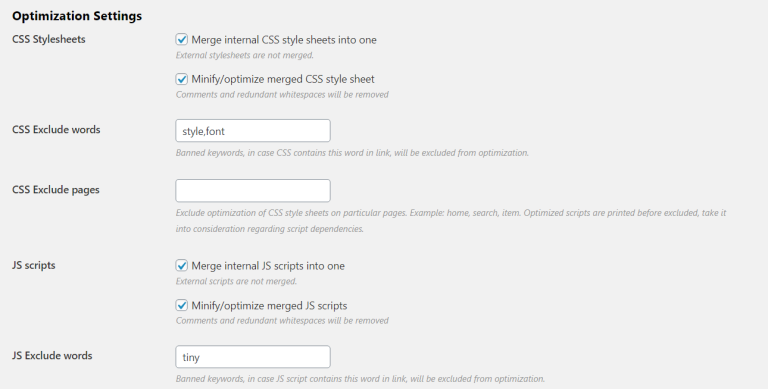
In the ever-expanding world of data science and research, the ability to organize, access, and share datasets efficiently is becoming increasingly critical. One of the most powerful tools in this endeavor is the dataset schema, which serves as a blueprint for how data is structured, stored, and accessed. By implementing a well-defined dataset schema, researchers can significantly enhance the visibility, usability, and impact of their work.
This article explores the concept of dataset schema, its importance in modern research, and how it contributes to better data organization and visibility. We’ll also discuss practical strategies for creating and managing dataset schemas that align with current trends in data science and open research practices.
What Is Dataset Schema and Why It Matters
A dataset schema is a formal description of the structure of a dataset, including the types of data it contains, the relationships between different data elements, and the rules governing how the data is stored and accessed. In essence, it acts as a map or guide that helps users understand the contents and format of a dataset before they begin working with it.
In the context of research, dataset schemas are particularly important because they enable transparency, reproducibility, and reusability. When a dataset has a clear schema, other researchers can quickly grasp what information is available, how it is organized, and how to use it effectively. This not only improves collaboration but also increases the likelihood that the dataset will be cited, shared, or built upon by others.
Moreover, dataset schemas play a crucial role in data governance and metadata management, ensuring that datasets are properly documented, secure, and compliant with relevant standards and regulations. As the volume and complexity of data continue to grow, having a robust schema becomes essential for maintaining order and clarity.
How Dataset Schema Impacts Research Visibility
Research visibility refers to the extent to which a researcher’s work is discovered, understood, and used by others. A well-structured dataset schema directly influences this by making data more accessible, searchable, and usable.
Here’s how:
- Improved Discoverability: A clear schema makes it easier for researchers to find and understand your dataset through search engines, repositories, and collaborative platforms.
- Enhanced Reproducibility: When datasets are properly documented with a schema, other researchers can replicate your findings more easily, increasing the credibility and impact of your work.
- Increased Collaboration: A standardized schema allows researchers from different institutions or disciplines to work together more seamlessly, reducing barriers to data sharing.
- Better Data Management: Schemas help prevent “analysis paralysis” by providing structure and clarity, enabling teams to focus on insights rather than data navigation.
For example, consider a dataset containing climate data collected over several decades. Without a proper schema, a researcher might struggle to identify which variables correspond to temperature, precipitation, or geographic location. With a well-defined schema, these details are immediately clear, allowing for faster and more accurate analysis.
Step-by-Step Implementation Framework
Implementing a dataset schema requires a systematic approach. Here’s a step-by-step framework to help you create and manage effective dataset schemas:
- Define or Audit the Current Situation
- Start by assessing the existing datasets within your organization or project.
- Identify gaps in documentation, inconsistencies in data formats, and areas where metadata is lacking.
-
Determine the goals of your dataset schema (e.g., improving accessibility, supporting collaboration, or ensuring compliance).
-
Apply Tools, Methods, or Tactics
- Use schema design tools like Apache Avro, JSON Schema, or Protobuf to define the structure of your dataset.
- Implement metadata standards such as Dublin Core or DataCite to ensure consistency across datasets.
-
Consider using schema registry systems like Confluent Schema Registry or AWS Glue Data Catalog to manage and version your schemas.
-
Measure, Analyze, and Optimize
- Track usage metrics such as how often a dataset is accessed, who uses it, and how it is integrated into other projects.
- Gather feedback from users to identify pain points and areas for improvement.
- Continuously refine your schema based on user needs, technological advancements, and evolving research requirements.
By following this framework, you can ensure that your dataset schemas are not only well-structured but also adaptable and useful over time.
Real or Hypothetical Case Study
Let’s imagine a research team at a university working on a large-scale study of urban mobility patterns. The team collects data from multiple sources, including GPS traces, traffic sensors, and public transportation logs. Initially, the data is scattered across different files and formats, making it difficult for researchers to access and analyze.
To address this, the team implements a dataset schema that defines the structure of each dataset, including:
- Unique identifiers for each data point
- Standardized field names and data types
- Metadata describing the source, collection method, and purpose of each dataset
As a result, the team sees significant improvements:
- Researchers spend less time understanding the data and more time analyzing it.
- Collaborators from other departments can easily integrate the datasets into their own projects.
- The datasets are published in an institutional repository with clear metadata, leading to increased citations and collaborations.
This case study illustrates how a well-designed dataset schema can transform the way research is conducted and shared.
Tools and Techniques for Dataset Schema
Several tools and techniques can help you create and manage dataset schemas effectively:
- Apache Avro – A data serialization system that provides a rich set of data types and supports schema evolution.
- JSON Schema – A lightweight format for defining the structure of JSON data, ideal for web-based applications.
- Confluent Schema Registry – A tool for managing and versioning schemas in a distributed environment.
- DataCite – A metadata standard for scholarly datasets, helping to improve discoverability and citation rates.
- AWS Glue Data Catalog – A centralized metadata store that allows you to manage and query datasets across AWS services.
- Schema.org – A vocabulary for structured data that can be used to annotate datasets for better search engine visibility.
These tools not only help in creating schemas but also support long-term data management, interoperability, and reuse.
Future Trends and AI Implications
As artificial intelligence and machine learning become more integral to research, the role of dataset schemas will only grow in importance. AI models require high-quality, well-structured data to function effectively, and a clear schema ensures that datasets meet these requirements.
Looking ahead, we can expect:
- Automated Schema Generation: AI tools may soon be able to automatically generate schemas based on the content of a dataset.
- Enhanced Data Governance: With the rise of AI-driven analytics, there will be a greater emphasis on data quality, security, and compliance.
- Integration with Generative Search: As search engines evolve, datasets with clear schemas will be more likely to appear in AI-generated summaries and knowledge panels.
Researchers who adopt robust dataset schema practices today will be better positioned to leverage these future developments and maintain the visibility and impact of their work.
Key Takeaways
- Dataset schema is a critical component of data organization and research visibility.
- A well-defined schema improves discoverability, reproducibility, and collaboration among researchers.
- Implementing a step-by-step framework ensures that your dataset schemas are effective and sustainable.
- Using tools like Apache Avro, JSON Schema, and DataCite can streamline the process of creating and managing schemas.
- As AI and machine learning become more prevalent, the need for structured, well-documented datasets will only increase.
By investing in dataset schema design, researchers can not only improve the efficiency of their work but also contribute to a more transparent and interconnected scientific community.
Meta Title: Understanding Dataset Schema: Enhancing Research Visibility Through Data Organization
Meta Description: Learn how dataset schemas improve research visibility, data organization, and collaboration in the modern data-driven world.
SEO Tags (5): dataset schema, research visibility, data organization, metadata management, research collaboration
Internal Link Suggestions: Parameter #10: Content Gap Filling, Parameter #18: Distinct Value Proposition, Parameter #96: AI Content Disclosure
External Source Suggestions: https://www.datacamp.com/community/tutorials/data-schemas, https://www.data.gov/








